
Key Points
After a dismal stretch of underperformance since last summer, the S&P 500 Gold Index is attempting to reverse trend on an absolute basis and relative to the S&P 500. Breadth metrics remain constructive in the long-term. New highs for the S&P 500 Advance/Decline Line confirm the bullish equity trend. Short-term metrics are fading but we are not seeing worrisome breakdowns yet.
Chart in Focus
The S&P 500 Gold Index has been a place to avoid since last summer. When the index made a high in August, it was met with a lower relative high and has been an underperformer since then. More recently, the Gold Index has been working higher on an absolute and relative basis after holding support. Price is above the 50-day moving average which is beginning to rise. On a relative basis, the Gold Index made a new 21-day high yesterday and is also above a 50-day moving average.
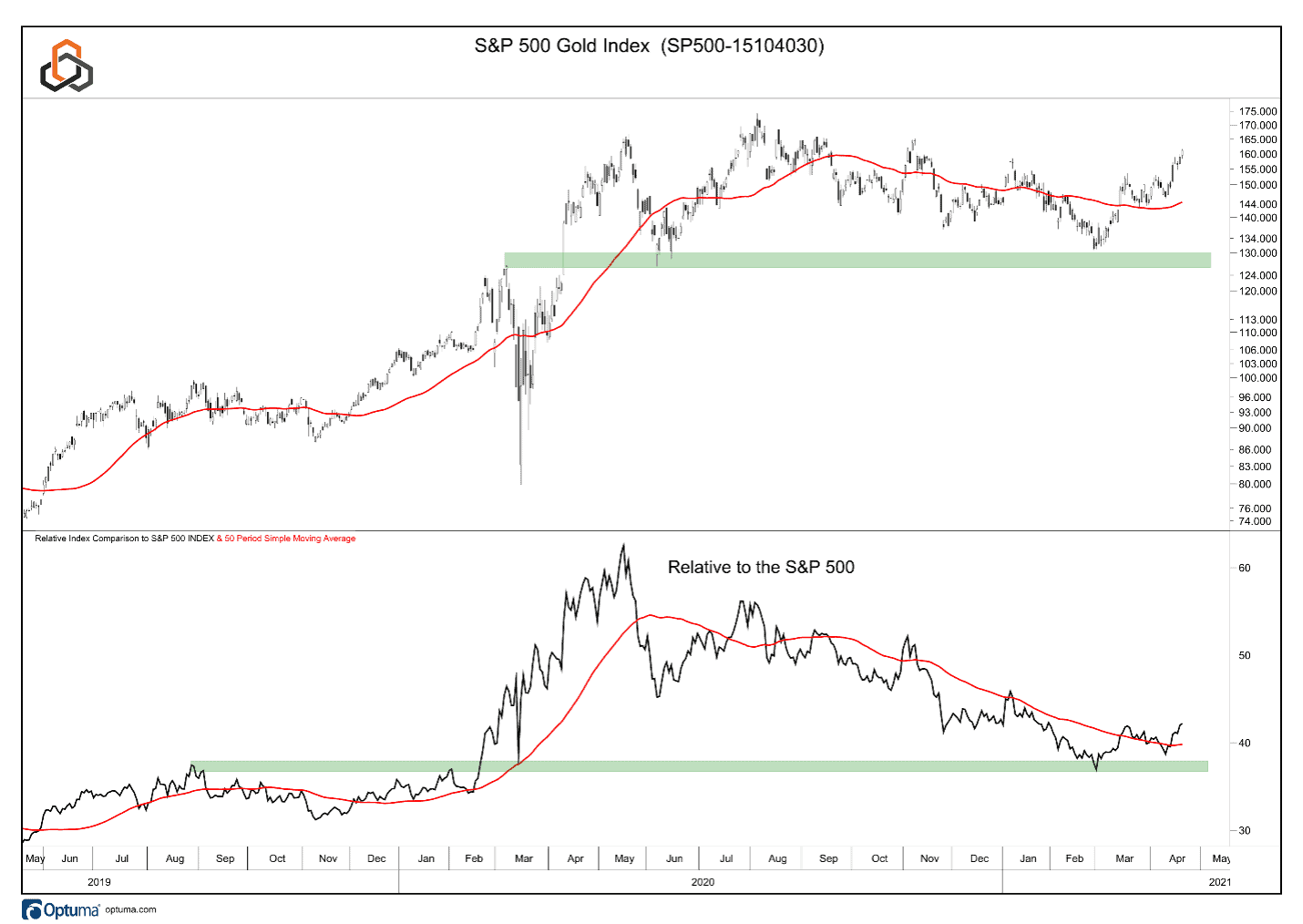
S&P 500 Breadth
The Advance/Decline Line for the S&P 500 is in an uptrend, matching the trend for the index. This indicator traded to a new high yesterday, which in the past has tended to signal that the S&P 500 would do the same. While there are no guarantees, the odds favor a continuation of the uptrend in equity prices.
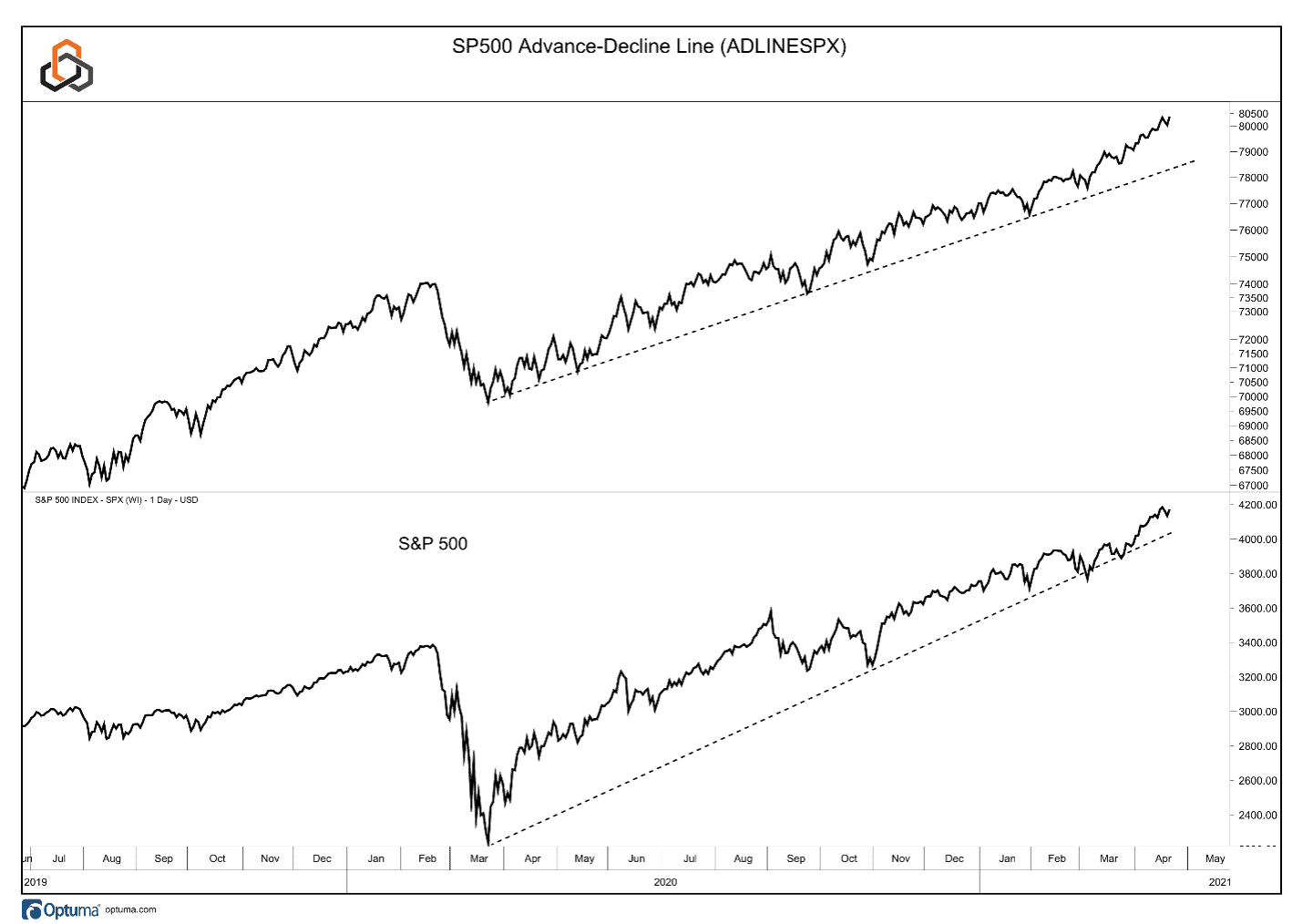
The percentage of stocks in the S&P 500 which are trading above their respective 200-day moving averages is currently 96.63%, up from 94.06% last week. This is the third consecutive week that we have seen this metric above the 90% mark. Since January 2011, when the percentage is greater than 90% and the S&P 500 is above its 200-day moving average, the index is higher 21 days (one month of trading) 57% of the time for a median return of 0.45%. N = 118.
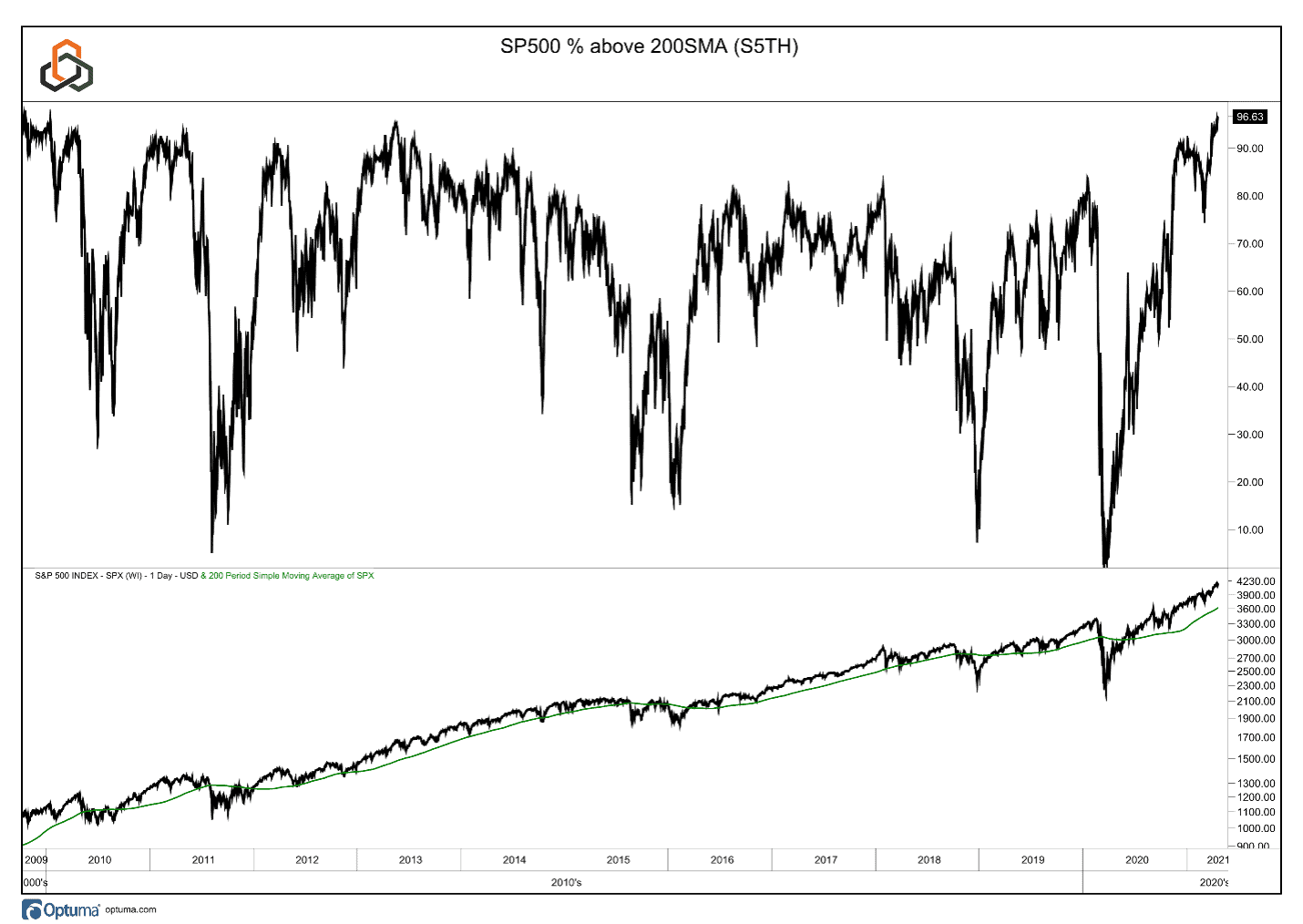
Looking at the percentage of stocks in the index trading above their respective 50-day moving averages, we can see the reading is 86.93%, down from 90.50% last week. Since September 2010, this metric has been above the 85% level while the index has been above its 50-day moving average on 166 days. Over the next month of trading, the S&P 500 has been higher 76.47% of the time for a median return of 1.39%.
Despite a pull back this week, the percentage has held above the declining trend line that was broken last week.
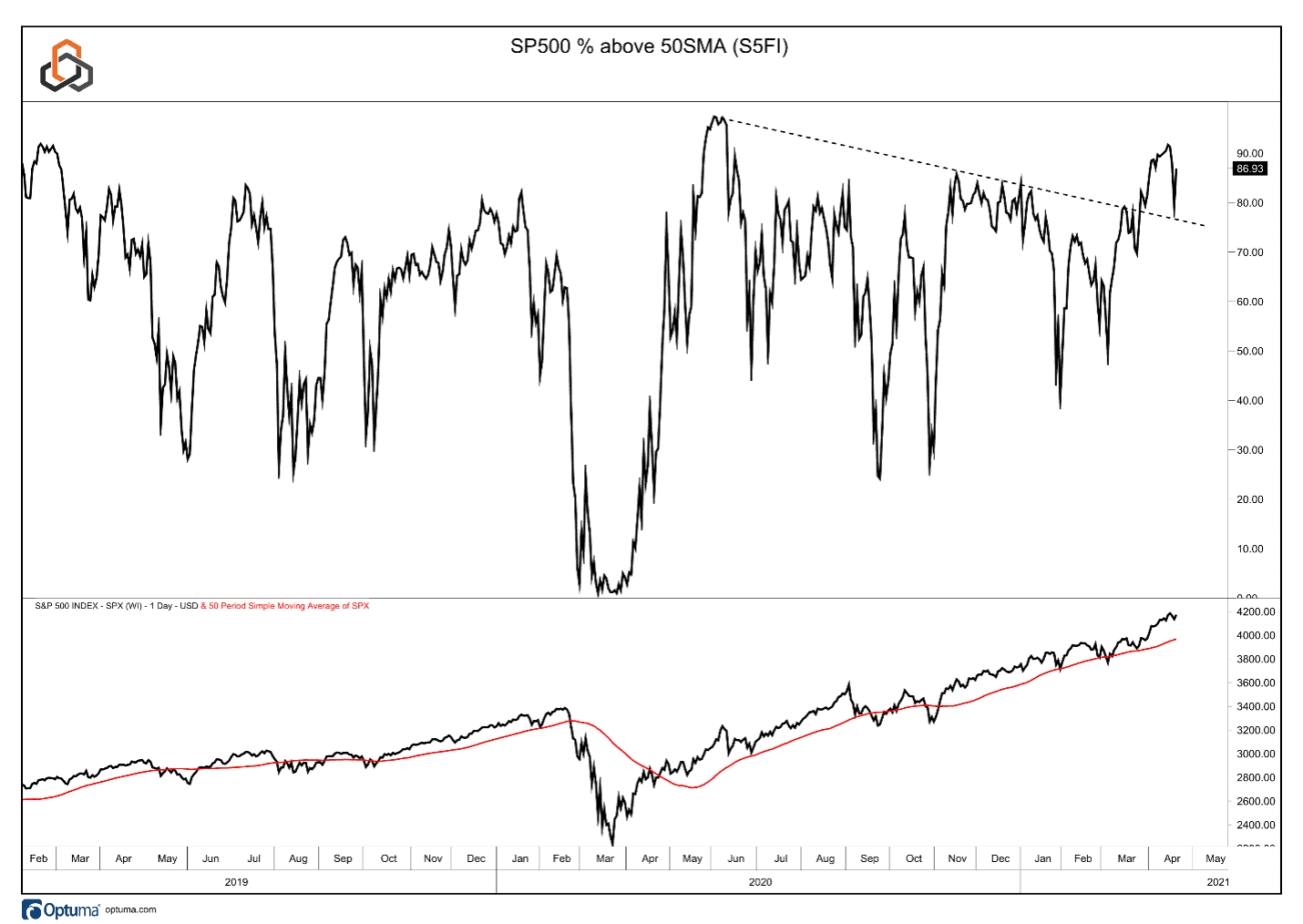
For the percentage of stocks that are above their 20-day moving averages, the metric is currently 81.98%%, down from 82.57% last week. Since September 2010, when this metric is greater than 80% and the index is above its 20-day moving average, the S&P 500 is higher, 21 days later, 67.58% of the time for median gain of 1.02%. N = 183 since June 2011.
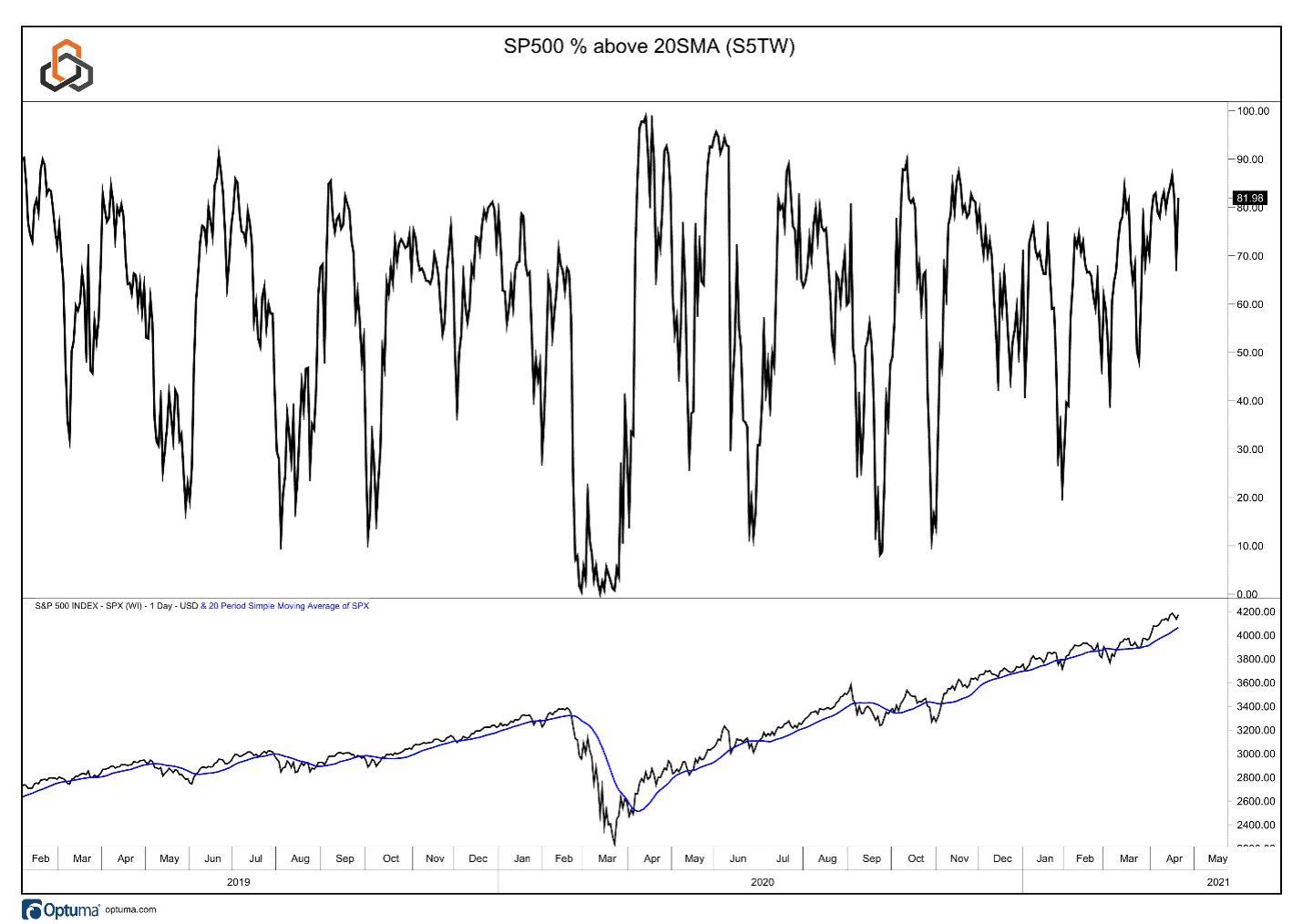
NYSE Breadth
New York Stock Exchange Breadth has wavered on the short-term metrics but remains constructive longer-term. The Advance/Decline Line continues to move higher along with the broader equity market. In the short-term, the percentage of issues trading above their respective 20-day moving averages is 61.21% but has been making a series of lower highs. The percentage of issues above their 50-day moving averages is 59.86%. Longer-term, the percentage of issues above their 200-day moving averages is 71.24%, a healthy majority.
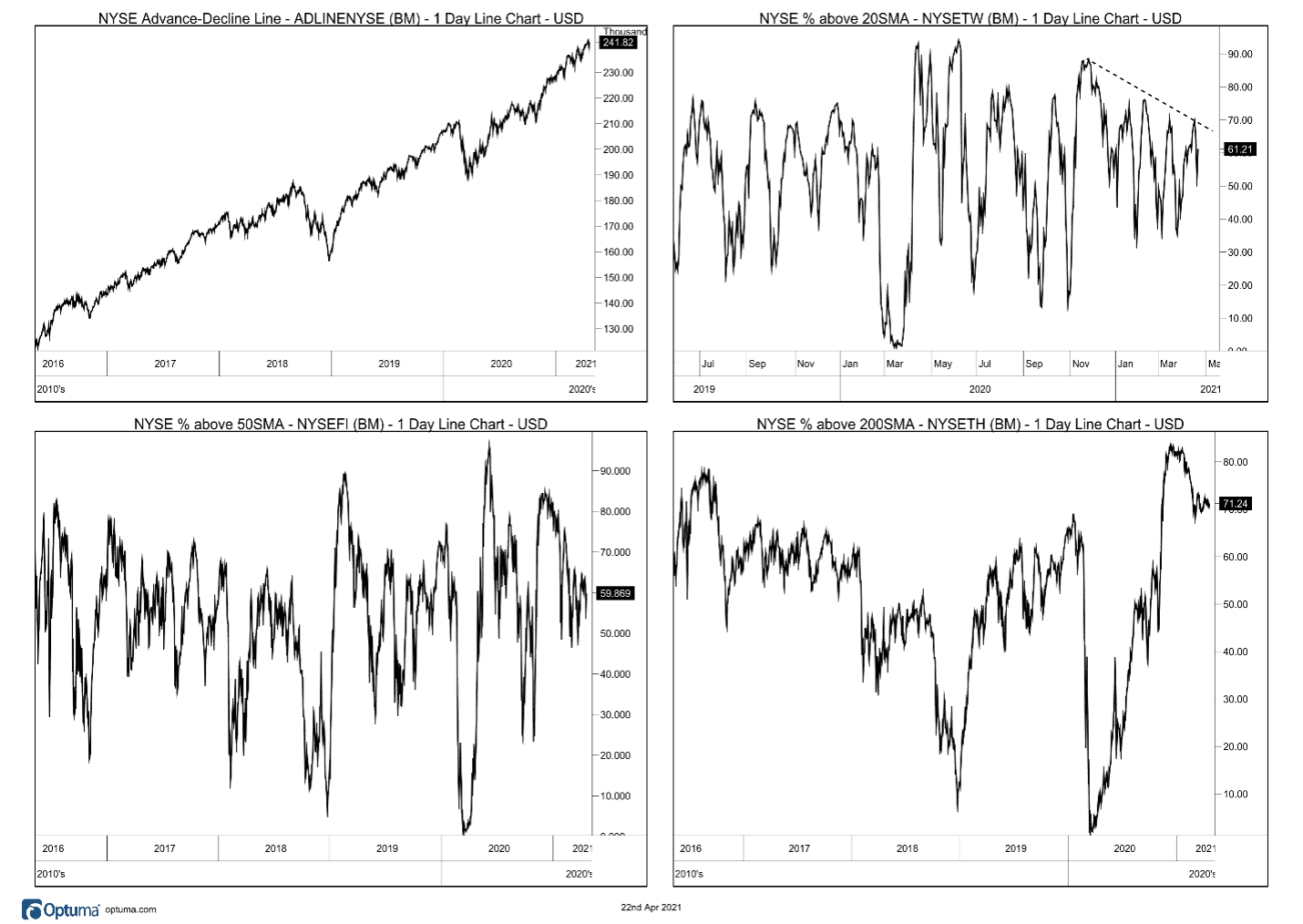
While breadth metrics can give us a sense of the level of participation in the market’s trend, we are also interested in leadership. Looking at the relationship between the Equal Weighted S&P 500 and the index itself (which is weighted by market cap), we can have a sense of leadership. When the line is declining, we know that leadership is more concentrated in the largest names. When the line is rising, we know that leadership is more widespread.
After a strong rise since the August 2020 low, the ratio is having a hard time breaking through the resistance zone that we have highlighted for the past few weeks. Interestingly, we can see that the Equal Weight/Cap Weight ratio’s stalling activity has roughly coincided with the S&P 600 (small caps) also stalling and not being able to break to new highs with the larger index last week.
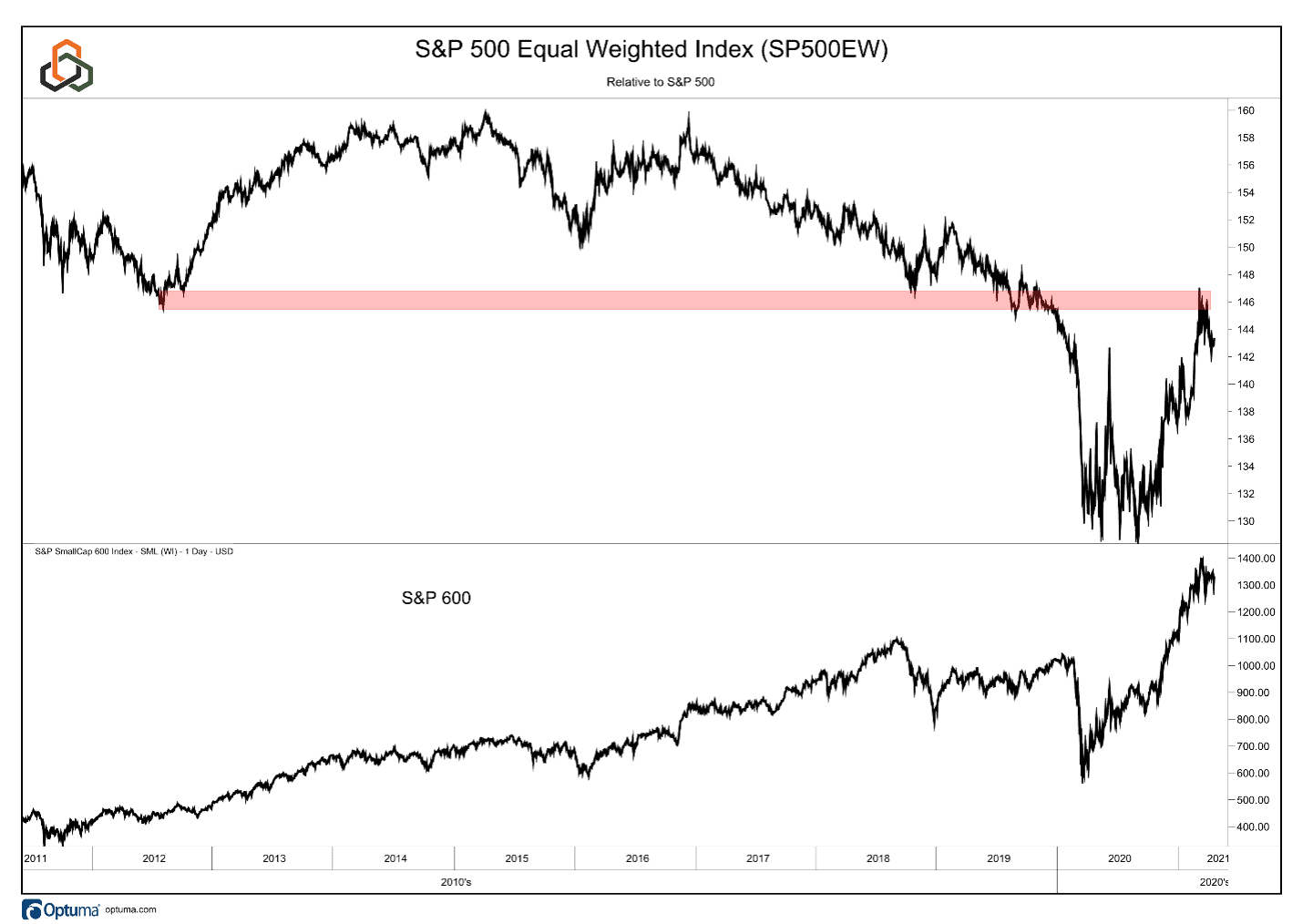
Take-Aways
Broadly speaking, breadth metrics remain supportive of the bullish trend in the equity market. Bears can point to the lack of confirmation on the short-term metrics, but we have yet to see the types of breadth breakdowns that we would expect to see ahead of a major decline in prices.
